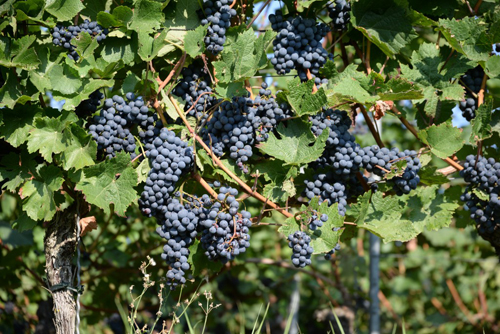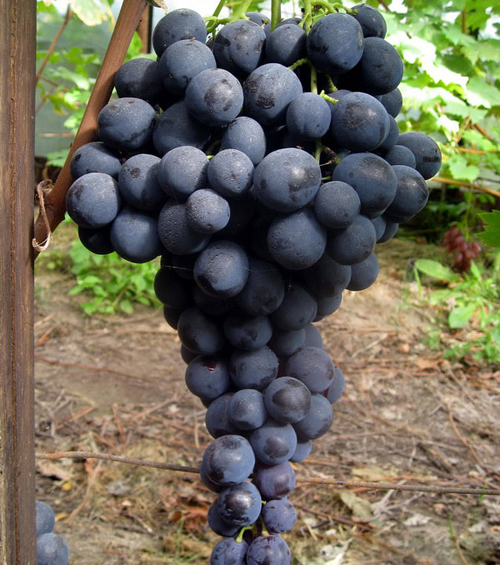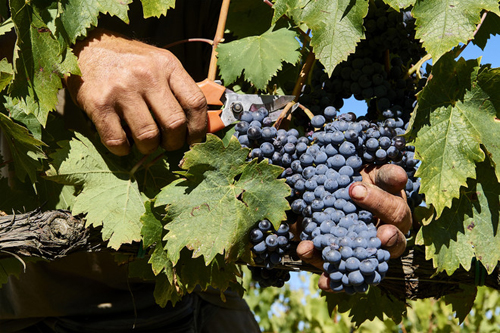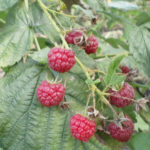Grape variety Strashensky
Strashensky is a rather old development of Moldovan breeders, which was born in the 70s of the last century at the local Scientific Research Institute of Viticulture and Winemaking NPO Vierul. The authors of the new form at that time were the leading employees of the selection department of the Institute M.S. Zhuravel, I.P. Gavrilov, G.M. Borzikova, N.I. Guzun.
The variety is obtained from crossing the Central Asian grapes Druzhba (Katta-Kurgan x Dodrelyabi) with a complex Franco-American interspecific hybrid Muscat de Saint-Valier (Save Villar 20−473). The maternal form was responsible for the transfer of aesthetic and gastronomic qualities to the offspring, and the paternal one became a donor of genes for resistance to unfavorable environmental factors. The result is a rather promising variety with a decent set of characteristics - large-fruited, high yield, excellent presentation and resistance to a number of pests and diseases.

In 1975, Strashensky entered the state variety testing, which he successfully completed only by 1989, after which he was allowed to cultivate in the North Caucasus - in the Krasnodar Territory and Adygea. In their republic, grapes were also zoned, but recommended for use in summer cottages and household plots. Currently, in industrial plantings, it is not particularly common, but among amateurs it enjoys an increased and deserved interest. It is grown in many post-Soviet countries, and, thanks to a not too late ripening period, the northern border of its cultivation area reaches the non-chernozem zone. The active spread of the variety among amateurs is facilitated by the relative ease of reproduction, associated with its increased resistance to phylloxera, which allows it to grow on its own roots even in areas of soil contamination by this malicious pest.
Agrobiological characteristics
Strashensky bushes have high growth vigor. The crown of a young shoot of grapes is closed, grayish due to dense pubescence, the axis of the shoot and young leaves have a strong bronze tint. The formed leaves are large and very large, rounded, or slightly elongated in length, three- or five-lobed, with an average degree of dissection. The color of the leaf blade is green, the surface is reticulate-wrinkled, the reverse side is densely pubescent, the character of pubescence is bristly. The upper lateral notches of the leaf are of medium depth, mostly closed with an ovoid lumen, but there are also open, lyre-shaped ones with a rounded bottom. The lower notches are smaller, often slit-like or barely outlined. The petiole notch is open, vaulted with a flat or pointed bottom. Petioles are long, green with reddish stripes. Lateral denticles are rather large, triangular or saw-shaped, with a base of medium width, rounded apices and smooth edges. The flowers are bisexual, fertile and bloom for a long time, making them a good option for pollination of functionally female grape varieties. Inflorescences are very long and branched with many flowers and ovaries. The tendency to peas and excessive looseness of the bunches is not observed in Strashensky. Ripening of annual shoots is excellent (90%). The matured vine becomes reddish-brown with darker areas in the area of the nodes.

In terms of the size of the bunches, the variety is one of the undisputed leaders. There are cases when the mass of a ripe brush exceeded 5 kilograms, and an indicator of 1.5-3 kg is quite common for him. On average, the weight of a bunch ranges from 600-900 grams, their length is 27-30 cm, width is 14-16 cm. The brush shape is cylindrical or cylindrical, conical in density, medium or loose.The combs are strong, well-developed, green in color. The berries are very large, round, dark purple with a thick gray prune bloom, with an average diameter of 26-28 mm, and weighing 7-10 grams. The grapes are very leveled, do not deform or damage due to their free location on the ridge, which, coupled with the huge size of the bunches, makes them very attractive in appearance. The flesh of Strashensky is tender, juicy-fleshy with a neutral harmonious taste and light sourness, without bright varietal characteristics in the aroma. Freshly squeezed juice is weakly colored, has a rather high level of sugar content - 18-20 g / 100 cubic meters. cm and titratable acidity - 7-8 g / cubic dm. The juice yield reaches 75% of the total weight of the grapes. The skin is thin, of medium strength, easy to chew and eat. The seeds in the berry are present in the amount of 2-3 pieces. Tasting assessment of fresh grapes - about 8 points.
The harvest is versatile. First of all, it is, of course, good for fresh consumption. The bunches have an amazing presentation, are in great demand among buyers in the market, and can be transported over short distances. But for long-term storage due to insufficiently strong skin, the variety is not adapted. Only in refrigerated chambers, at optimal temperature and humidity, it can be stored for a couple of weeks. As a raw material for processing, Strashensky shows truly endless possibilities. It makes excellent saturated juices, compotes, preserves, jams and marinades. The dark-colored berry gives the whole preservation an excellent richness of color. And finally, one cannot fail to mention the suitability of the variety for home winemaking. Naturally, he is far from powerful high-tannin red wines, which are obtained from special technical varieties of grapes, but a decent dry table drink can be prepared from it. Due to the sufficient acidity and thin skin of the berries, the wine will turn out to be quite light, which is more typical for white varieties. Such a refreshing drink will be pleasant to drink in hot summer with light snacks.

The ripening period of the crop is medium and medium-late. The growing season from bud break to the onset of removable ripeness is 135-145 days. In the south, ripening occurs by mid-September. The need for heat during this time is 2800-2900 ° C. This allows it to be grown in addition to the traditional grape regions, throughout the Central Black Earth Region, however, in the northernmost regions, in some years, the harvest may not fully ripen. The frost resistance of the variety (-23 ° C) is sufficient for a non-covering crop only in the very south. In the rest of the cultivation regions, shelter of the vines is required for the winter.
The yield of Strashensky is always at its best, moreover, the grower must make efforts to limit it in order to prevent overloading the bush, its weakening and death. In addition to outstanding large-fruitedness, high productivity of plants is influenced by such varietal features as excellent indicators of the number of bunches on a developed shoot (2.0) and on a fruitful one (2.0). In fact, this means that all 100% of his vines are fertile, and each of them is ready to give an average of two very large clusters. It is not surprising that with such indicators, the bushes are ready to produce up to 30 kilograms of grapes per season without signs of overload. In principle, they can do more, but this should not be allowed so as not to harm the plant itself. Replacement and dormant buds are also fruitful in this variety, due to which the bushes bloom and form clusters even when they come under a recurrent late spring frost.
After ripening, the grapes are not recommended to be left on the bushes, as they are susceptible to gray rot, and can be seriously damaged in case of the onset of prolonged autumn rains. In addition, Strashensky berries are prone to cracking, and not only after ripening, but also during its process.In this regard, it is necessary to ensure that the soil under the bushes does not dry out too much, since rainfall after a severe drought will inevitably lead to a sharp change in soil moisture and a natural “crackling” of berries. And finally, during the ripening period, the bunches of this variety require protection from wasps, because insufficiently strong skin of grapes is not a serious barrier for these insects.
Agrotechnical features
Growing Strashensky cannot be called a completely carefree occupation, however, if a number of necessary conditions are met, this grape is ready to present its owners with record harvests. As a highly productive variety, it needs to be placed on rich, water and air permeable soils, on the slopes of southern exposures. He needs a lot of light, heat and moisture to achieve the necessary conditions for a bountiful harvest. In northern conditions, it can grow normally and bear fruit only in a wall culture, when planted on the southern side of various buildings under protection from cold air currents. Even in the south, Strashensky feels depressed on cold slopes, in lowlands, damp and wetlands. Drought resistance shows good, but to obtain a high-quality bountiful harvest, it requires maintaining sufficient moisture throughout most of the growing season.
The grape is tolerant to phylloxera, due to which it can reproduce widely by rooted cuttings on sandy and sandy loam soils. Planting with grafted seedlings is required only on heavy-textured soils in the zone of distribution of the root pest. It grows well with the main rootstocks, while Berlandieri x Riparia Kober 5BB, Berlandieri x Riparia CO4 and Riparia x Rupestris 101−14 are considered the best for it. The recommended planting scheme on non-irrigated lands is 2-2.5 × 1.5-1.75 m. In the presence of irrigation, the distance between plants can be slightly increased. Annual growth in narrow row spacings will have to be tied vertically.
The bush management scheme is chosen depending on the climatic conditions and the ability of the variety to grow in a given area without shelter for the winter. Of course, the best option for Strashensky would be to form a plant on a high trunk with a large supply of perennial wood, but this is possible only where the temperature in winter is guaranteed not to drop below the critical -23 ° C for him. In other regions, covering formations will have to be used - Guyot, an inclined cordon or a multi-arm fan. They are convenient because they allow you to remove the vine from the trellis annually without damage for warming for the winter. The bushes are usually covered with earth from the rows, however, in frost-prone regions, special materials are also used - peat, straw, wood shavings, reeds, etc. On top of such a heater, a waterproofing layer of film, roofing material or wooden shields is required to prevent wetting, and as a result - damping eyes on grapes. Often, and quite productively, light film shelters, made like mini-greenhouses, are also used to insulate plants. The temperature under them in winter is 6-8 degrees higher than in the open air, which is often enough to protect the aboveground part of the plant from damage.
Fruiting bushes of this variety require mandatory rationing of the load of shoots and crops in order to maintain a balance between the abundance of fruiting and the physiological capabilities of plants. Spring pruning of Strashensky is carried out shortly - by 3-5 eyes, with a total load of 30-40 buds per bush. In the course of the debris at the beginning of the growing season, all weak and sterile shoots, "twins" and "tees" that have developed from one bud are removed. On the remaining productive vines, inflorescences are thinned out, keeping one per shoot, and in the largest brushes, the lower third is also cut off. The latter procedure is necessary in order for the berries in massive bunches to ripen at the same time, which is a traditional problem in large-fruited varieties. On average, no more than 1.2 kg of grapes should grow and ripen on a bush per shoot, and to achieve the nominal yield on the plant, it is tedious to form at least 25 strong vines.If you want to get evenly ripened bunches of outstanding size, it is recommended to pinch the shoot through a few nodes above the inflorescence, and then leave the three stepsons that have appeared to grow at once. Thus, the leaf apparatus will be significantly increased, which will have a positive effect on the activity of photosynthesis and, accordingly, on the volume of plastic substances for nourishing the growing brush.
With regard to fungal diseases, Strashensky shows unequal resistance. The variety has an increased resistance to downy mildew - mildew, while it is susceptible to powdery mildew and gray rot. In accordance with this, it is necessary to build a strategy for its protection. So, only preventive mildew treatments will be required, while mildew will have to be dealt with fully, after at least 4-5 sprays per season. The harmfulness of gray rot can be controlled by harvesting on time and avoiding overripening of the grapes. In addition, thinning the crown and lightening the fruit zone in order to properly ventilate the bunches and illuminate them with the sun will help in containing the causative agent of this disease.
To prevent cracking of berries, it is necessary to control the soil moisture under the Strashensky bushes, avoiding sharp fluctuations. Ideally, this should be done with watering during dry periods, which will have a beneficial effect on the general condition of the plants and their productivity. However, in the absence of the possibility of irrigation, good results are shown by mulching the soil, which can be carried out with the same materials that were used to insulate the vines in winter. Don't forget to fight the wasps. To do this, they collect and destroy the nests of these insects in the vineyard, hang up special traps, or arrange containers with sugar syrup, where they often drown. You can try to put bunches of grapes in individual bags, and if you succeed, given the tremendous large-fruited variety, then you cannot imagine the best protection of the crop from gluttonous insects.








